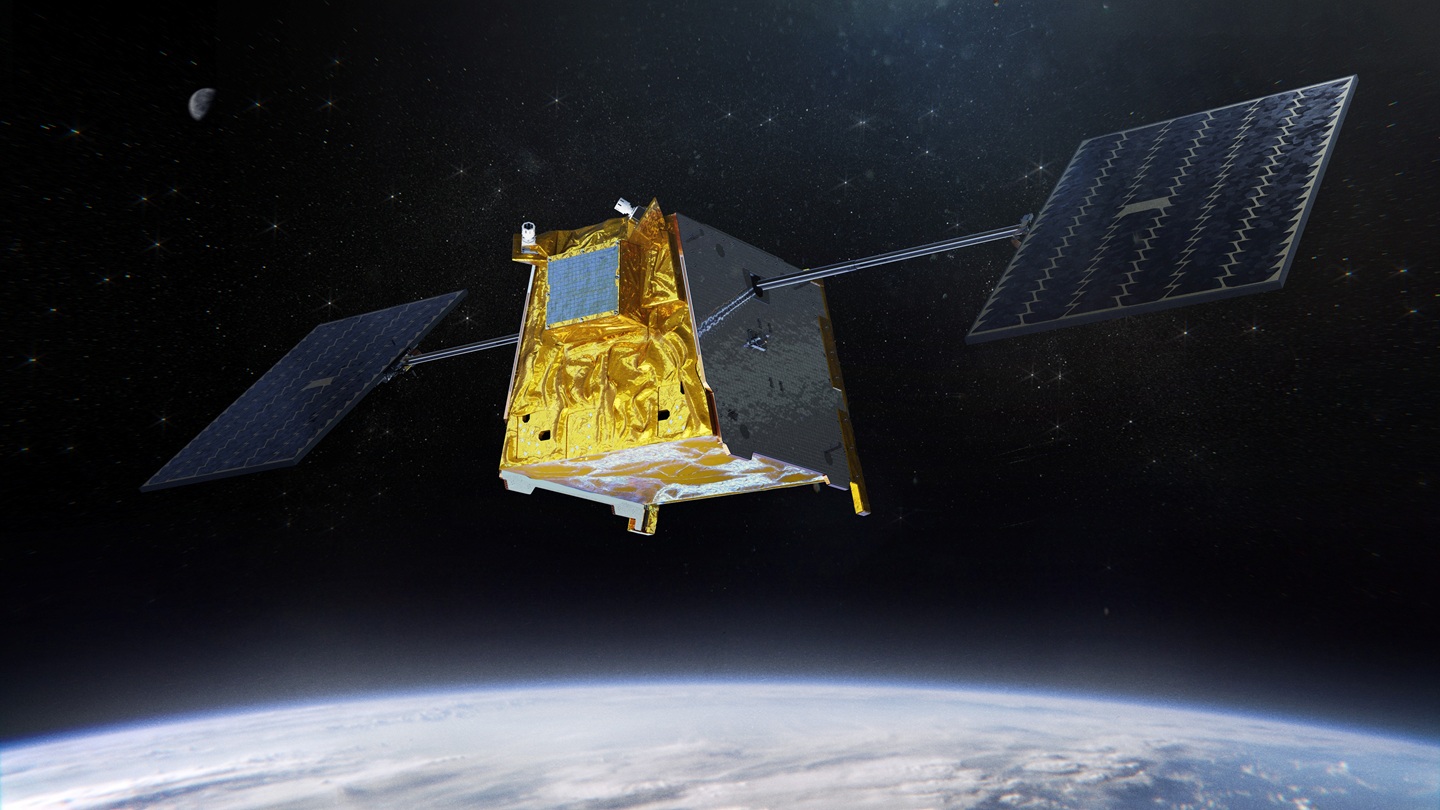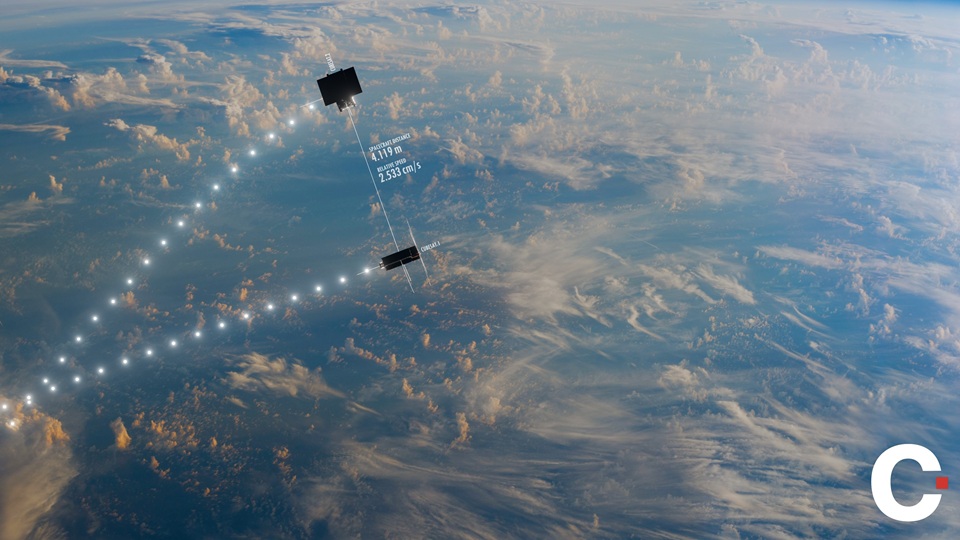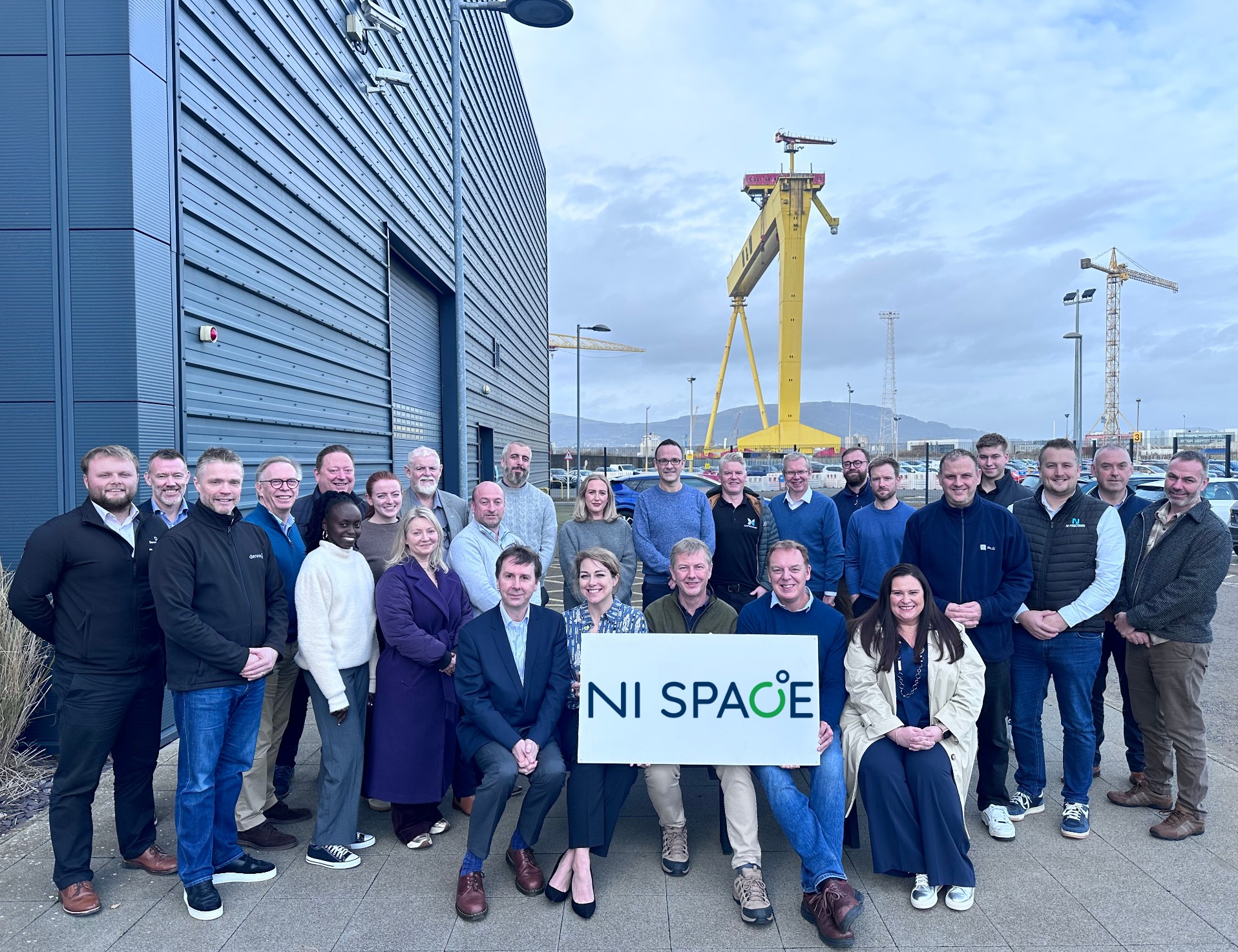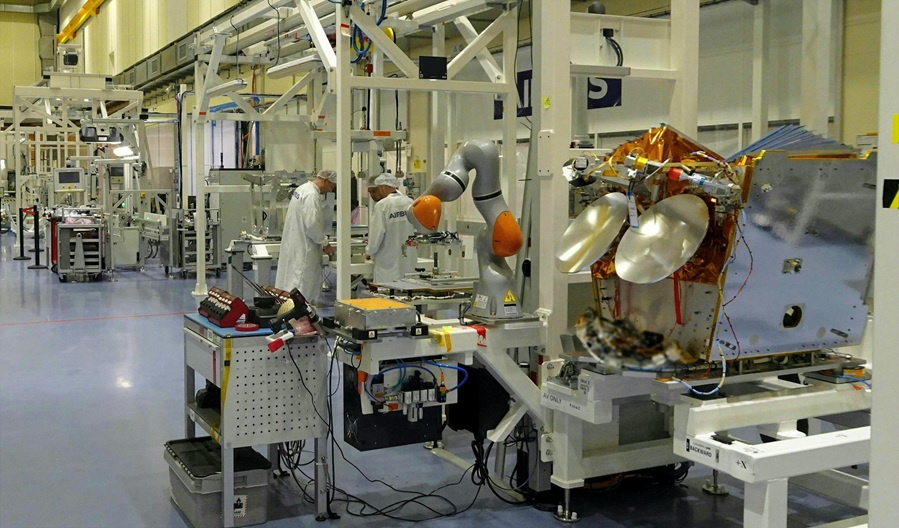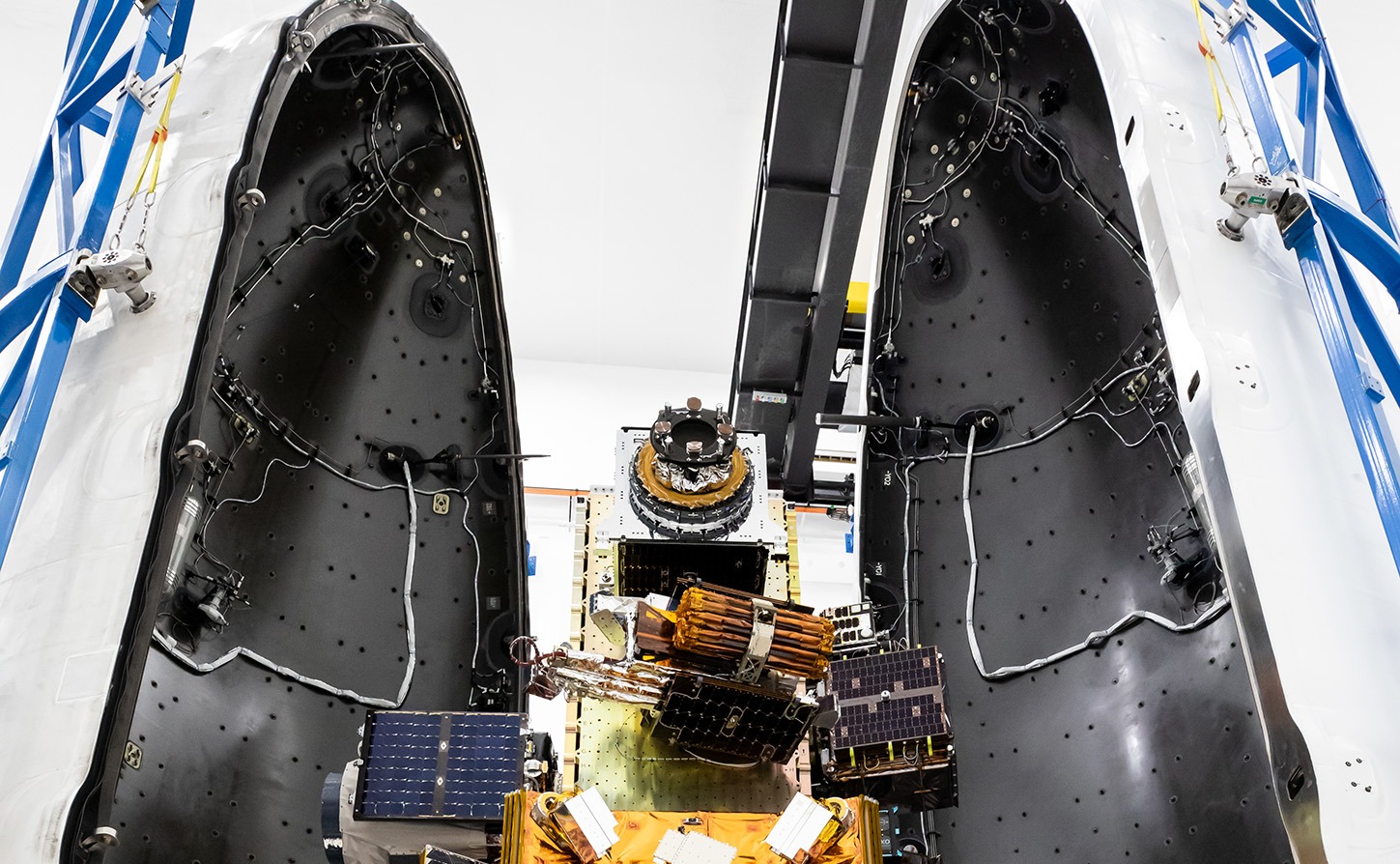Thales Alenia Space to deliver Europe’s two main modules for lunar space station
.jpg)
Above:
Gateway Orion.
Copyright Thales Alenia Space_E.Briot
These two modules are the European contribution for this Gateway. The first tranche of I-HAB contract, (worth 36 million euros, the global amount being 327 million euros), has been signed with the European Space Agency (ESA), while ESPRIT development has already started under Authorisation To Proceed (ATP) with a contract signature expected by the end of the year.
This Gateway, a manned lunar orbital infrastructure, is one of the pillars of NASA’s Artemis programme, designed to return humans to the Moon by 2024. It is being implemented through international cooperation, currently involving NASA (United States), ESA (Europe), JAXA (Japan) and CSA (Canada) with each partner in charge of the development of complementary elements, to be assembled and operated in lunar orbit as from 2024. The station, weighing about 40 metric tons, will be automatically assembled piece by piece in a near rectilinear halo orbit (NRHO) around the Moon. The final configuration is still partly under final consolidation but it will mainly comprise habitation modules for the crew offering as well docking capabilities for visiting vehicles and the Orion space capsule, logistics modules, communications with the Earth and Moon, EVA airlocks for scientific experiments and crew extravehicular activities (EVA), as well as a robotic arm. It is not intended for permanent occupancy, but will be able to host 4-person crews for periods of one to three months. Gaining new experiences on and around the Moon will prepare NASA to send the first humans to Mars in the coming years, and the Gateway will play a vital role in this process.
Hervé Derrey, CEO of Thales Alenia Space said: “We would like to thank our customer ESA for continuing to place their trust in our ability to build Europe’s two main contributions to the lunar space station, as well as national space agencies in particular CNES and ASI for their support in these two programmes. Through our contributions to the ISS, the Axiom commercial space station and now the lunar space station, we are expanding the possibilities in this field, not only in terms of technology, but also for the safety and comfort of astronauts.”
Thales Alenia Space , the joint company between Thales (67%) and Leonardo (33%), has been chosen to build Europe’s two main contributions to this space station:
• I-HAB (International - Habitat), a pressurised module that will provide crew living quarters, plus docking points to supply interfaces and resources to vehicles in transit. Drawing on Thales Alenia Space’s longstanding expertise in the development of pressurised modules for the ISS, along with new technologies and processes, I-HAB will mark the transition from the ISS to a new generation of space infrastructures for deep space exploration. It will meet evolving requirements and performances for lighter structures and optimised micrometeorites protection system, evolved docking systems and hatches, enhanced functional and avionic architectures, more efficient thermal control system with deployable radiators to ensure full autonomous capability of heat rejection, innovative conditioning systems. The I-HAB will experience for the first time long exposure in the deep space environment, offering the opportunity to test and prove potential design solutions for protection against cosmic radiations. Being unmanned for most of its time on orbit, it will also require dedicated solutions for the robotic operations, either on board and externally. One of the key evolving step with respect to the ISS will be focused on designing, with the support of virtual reality technique, more comfortable internal accommodations, with exploitation of modular and reconfigurable solutions to optimize room and comfort for the crew. The module will be provided by Europe with contributions from the other space Agencies like environmental and life support system from JAXA, avionics and software parts from NASA and robotic components from CSA; the integration of all these elements in I-HAB will leverage on the large experience already acquired by Thales Alenia Space during the ISS Nodes 2 and 3 activities already developed in cooperation. I-HAB is slated for launch in 2026.
• ESPRIT (European System Providing Refueling, Infrastructure and Telecommunications) consists in two main elements. The first, named HLCS (Halo Lunar Communication System), ensures the communications between the Gateway and the Moon. Launch is planned 2024 with HALO, the first habitation and logistics module, supplied by the United States, and derived from the Cygnus resupply cargo, for which Thales Alenia Space has been selected to provide its primary structure and micrometeoroid protection system. ESPRIT includes a second part named ERM (ESPRIT Refueling Module) which combines the refueling of the Gateway with a small pressurized module with windows. ERM will provide active refueling of the Gateway with xenon and chemical propellants to extend its life time but also prepare for re-usable Lunar Lander or Deep Space Transport (to Mars). ERM’s pressurised tunnel provides wide windows offering a 360° view on Space, Moon, Earth and on the Gateway. This pressurised volume will also contain various logistics and other elements for the crew. Delivery is planned for 2026, with launch the following year.
Massimo Claudio Comparini Senior Executive Vice President Observation, Exploration and Navigation at Thales Alenia Space, commented: “Through these contracts, Thales Alenia Space will call on the full sum of our expertise to expand our knowledge base and push back the frontiers of the cislunar exploration. Looking further ahead, this space station will be a jumping-off point for future human missions into deep space, including Mars.”
Thales Alenia Space will have to meet a number of daunting challenges to design and build these two modules:
- Technical challenges due to the severe lunar environment and extreme thermal conditions, including protection against micrometeorites and cosmic radiation.
- Complying with the Artemis programme schedule, as well as with stringent launch weight to be compatible
with a US commercial launcher. - Autonomous operation: since the lunar space station will not be permanently occupied, unlike the ISS, it will have to be able to function independently. Thales Alenia Space will provide robotic interfaces for both modules, I-HAB and ESPRIT, enabling remote operation and maintenance.
Walter Cugno, Vice President, Science and Exploration at Thales Alenia Space concluded: "I’m very proud that we have leveraged the expertise built up on the International Space Station to make us the European benchmark in orbital infrastructures and a pivotal partner in the Humanity’s return to the Moon challenge.”
I-HAB: Thales Alenia Space in Italy is programme prime contractor, with responsibility for overall programme management, product assurance and safety, system engineering, functional design, all components concerning human factors, thermal and mechanical systems, the primary structure and production of hatches and the assembly, integration and testing (AIT) phase. Thales Alenia Space in France is in charge of software and avionics subsystems.
ESPRIT: Thales Alenia Space in France is programme prime contractor, with Thales Alenia Space in Italy in charge of the pressurised tunnel and windows. Thales Alenia Space in Bristol UK will contribute to the chemical refueling system, while OHB (as part of the core team) will be in charge of mechanical and thermal subsystems for the non-pressurised sections and the xenon refueling system. Selected in open competition, Thales Alenia Space in Belgium will provide the HLCS electrical Interfaces units (Remote Interface & Distribution Unit – RIDU) and the radio frequency amplifiers (TWTAs), Thales Alenia Space in Spain the S-band communication transponder and Thales Alenia Space in Italy for the K-Band transceiver.






